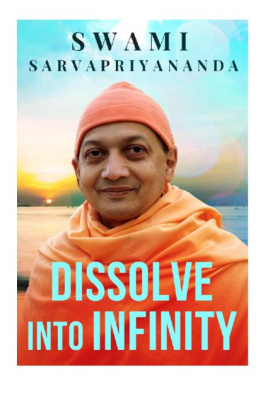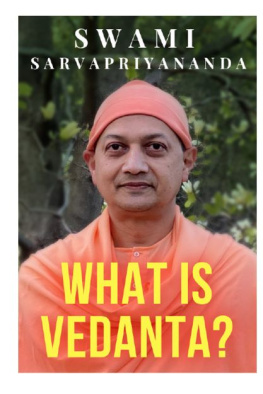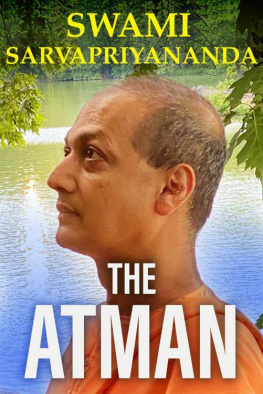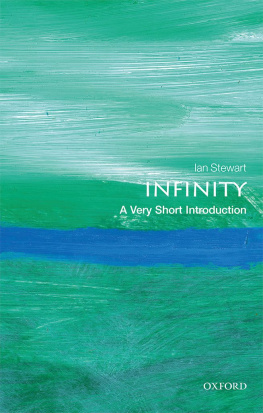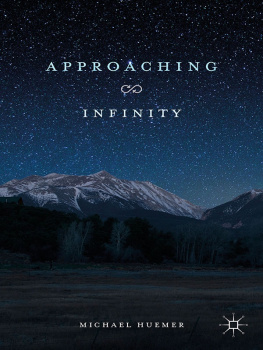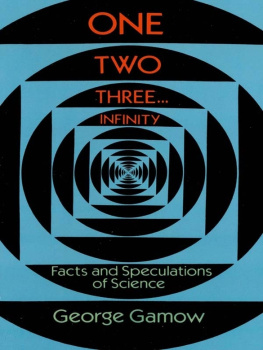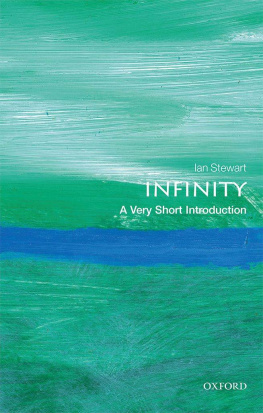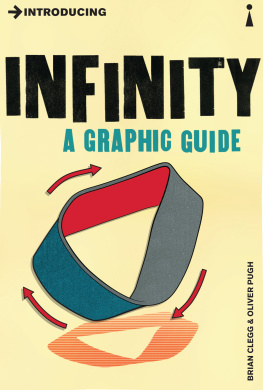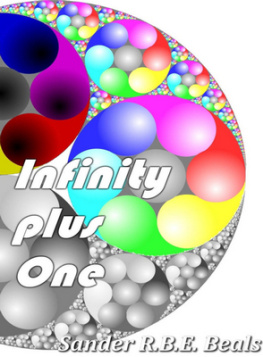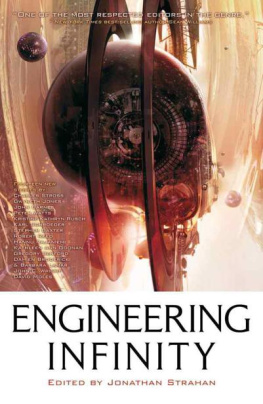Sarvapriyananda - Dissolve into Infinity
Here you can read online Sarvapriyananda - Dissolve into Infinity full text of the book (entire story) in english for free. Download pdf and epub, get meaning, cover and reviews about this ebook. year: 2021, genre: Religion. Description of the work, (preface) as well as reviews are available. Best literature library LitArk.com created for fans of good reading and offers a wide selection of genres:
Romance novel
Science fiction
Adventure
Detective
Science
History
Home and family
Prose
Art
Politics
Computer
Non-fiction
Religion
Business
Children
Humor
Choose a favorite category and find really read worthwhile books. Enjoy immersion in the world of imagination, feel the emotions of the characters or learn something new for yourself, make an fascinating discovery.
- Book:Dissolve into Infinity
- Author:
- Genre:
- Year:2021
- Rating:5 / 5
- Favourites:Add to favourites
- Your mark:
- 100
- 1
- 2
- 3
- 4
- 5
Dissolve into Infinity: summary, description and annotation
We offer to read an annotation, description, summary or preface (depends on what the author of the book "Dissolve into Infinity" wrote himself). If you haven't found the necessary information about the book — write in the comments, we will try to find it.
Dissolve into Infinity — read online for free the complete book (whole text) full work
Below is the text of the book, divided by pages. System saving the place of the last page read, allows you to conveniently read the book "Dissolve into Infinity" online for free, without having to search again every time where you left off. Put a bookmark, and you can go to the page where you finished reading at any time.
Font size:
Interval:
Bookmark:

Dissolve into Infinity
Ashtavakra Gita , also called the Ashtavakra Samhita, is a famous Vedantic text, which imparts the most sublime non-dual truth. When I stayed in the Himalayas, I took along only one book with me, the Ashtavakra Gita .
The only disciple to whom Sri Ramakrishna taught the Ashtavakra Gita, was Swami Vivekananda, who at first refused to read it and only did so when coaxed by Sri Ramakrishna. But later in his life, Swami Vivekananda highly praised the teachings of Ashtavakra and spoke about it in a number of his talks. Some of his talks in California have many quotes from the Ashtavakra Gita , translated into lucid English.
In spirituality, there are texts that talk to the heart and emotions, there are spiritual teachings that talk to the mind and intellect, and then there are some teachings like the Ashtavakra Gita that bypass all these and talk directly to the God within us. It calls to the divine within us, calls directly to our true nature. It does not have arguments, or nicely reasoned logic leading to an inescapable conclusion, integral to many Vedantic texts. Even the language is direct, simple and minimalistic. Ashtavakra tells you the central truth that you are none other than God. Tat tvam asi , which translates to That thou art- this one teaching is repeated again and again throughout the text.
Reading the Ashtavakra Gita is equal to meditating. If you cannot have nirvikalpa samadhi , you can at least read this book! Reading it for an hour or two is as good as intense meditation. It is the most profound thing that has ever been put into words. I have read the sacred literature of the East and the West, and there is nothing that quite compares to this text. It is like looking straight at the sun, which is uncomfortable. All the scriptures of different religions, including Vedanta, are like looking at the moon. The moonlight is only the reflected light of the sun and is cool, refreshing and beautiful. But looking straight at the sun is uncomfortable, which we will try to do here.
When you look at a mirror, you see your face staring back at you. When you read this book, you will see the face of God. While reading this, we must try to understand what is being said, but what is most important is recognizing, appreciating and noticing that it is the truth in our life. It is far beyond something that needs to be practised; it is not even something that needs to be realized it is just something that needs to be noticed. Books on philosophy and theology are for understanding, inspiration and practice. But there are rare books for direct realization that tell you the truth straight away.
When you read the Ashtavakra Gita , the automatic reaction would be to use the mind to understand it. But this is not what this book is meant for. This book speaks to something within us which goes beyond the understanding of the mind. In fact, the eternal truth written about here illumines the mind as well. So, when reading this, you must focus intently but also relax, and dive deep within yourself, when you feel the urge to do so, because that is what this book is meant for.
I will share the four verses from the fifth chapter of this book. The teacher is the great sage Ashtavakra and the student is Emperor Janaka. This chapter is called Four Ways to Dissolution, where each verse ends with the statement - thus dissolve into infinity. Each of the four verses is independent, a direct indication of the reality within us. However, there is a progression too. The first three verses delve into the depths of non-duality, and the fourth one is the consequence of the insight gained in the first three.
Asangatvam: Non-Attachment
Chapter 5 Verse 1
nate sangosti kenapi kim shudhastyaktum ichhasi,
sanghata vilayam kurvan evameva layamvraja.
You are never attached to anything in this universe, oh pure one, what are you trying to give up? In this way, the bodymind complex dissolves into infinity.
This means you are never attached to anything in this universe. Ashtavakra, in his typical manner, says the most astonishing and radical things. Yet if you meditate upon them, a great realization will dawn upon you - he is simply telling you the truth about yourself. Think about it. Everything passes; look at everything from your childhood until now, places and houses you have lived in, your schools and colleges where you have studied, places you have visited how everything has changed over the years. Similarly, the people you have known through your life, have all come and gone. Not just in this life but over many lifetimes you have had many fathers, mothers, husbands, wives, children, grandchildren, friends, and enemies. Not only have all these people come and gone, but also your most treasured as well as insignificant possessions have all come and gone. The setting sun shows us that everything that is present here, including today, will go. In Swami Vivekanandas words - Death is the end of life, of beauty, of wealth, of power, of virtue too. Saints die and sinners die, kings die and beggars die. They are all going to death. All of us, our bodies, will die one day.
Buddhism, Vedanta and other spiritual philosophies insistently tell us that the world is impermanent. But there is another side to this equation which Ashtavakra Gita is pointing out. If everything has gone, is going away or will go away, what it means is that nothing sticks to you, you are not attached to anything in this universe. The impermanence of things means you who are experiencing these things that come and go are not attached to anything. But one may argue that this is not true, since we are attached to so many things in life like our wealth, house, children, opinions, political views, career, body, health, youth and even our enemies. But, is this really so? Think of the greatest possible attachment this world can ever see, which is the attachment of a mother to her new born baby. The child occupies the mothers thoughts and emotions all day long, and yet every night when she manages to fall asleep, happily, peacefully and gratefully. She slips into the unknowingness of deep sleep where the world including her most precious baby is forgotten. She enters this state without any hesitation. She does not think what will happen to my baby if I leave it behind.
Notice carefully that Ashtavakra is not asking us to practice detachment. He is categorically saying that non-attachment is already a fact, whether you practice it or not, whether you like it or not! It is the mind that develops attachments where it decides it wants certain circumstances to continue with regards to wealth, health, place and environment. But this is just our mind thinking. Beyond the mind there is the witness consciousness ( Sakshi ), which is not attached to anything, not to the world, not to the body, not even to the mind.
The Man and The Rug
William Blake once said, He who binds to himself a joy, does the winged life destroy; but he who kisses the joy as it flies, lives in eternitys sunrise. The moment you grasp something, be it a person, a possession or an idea, you are caught as well.
Sri Ramakrishna narrates a story, where a man jumps into a fast-flowing river to retrieve something which appears from afar to be an expensive rug. But to his shock he discovers that it is not a rug but a bear! The bear catches hold of the man in a tight bear hug. The onlookers standing by the riverside, seeing the man being swept away with the rug, cry out to him to let go. The man shouts back that he has let go of the rug, but the rug does not let go of him! This is attachment or addiction. Ashtavakra tells us that this attachment is a state of the mind. You - the witness consciousness - are not attached to anything.
Font size:
Interval:
Bookmark:
Similar books «Dissolve into Infinity»
Look at similar books to Dissolve into Infinity. We have selected literature similar in name and meaning in the hope of providing readers with more options to find new, interesting, not yet read works.
Discussion, reviews of the book Dissolve into Infinity and just readers' own opinions. Leave your comments, write what you think about the work, its meaning or the main characters. Specify what exactly you liked and what you didn't like, and why you think so.

